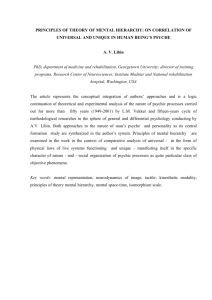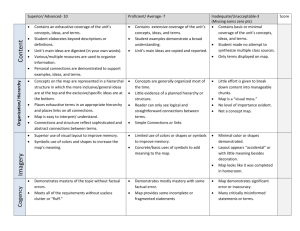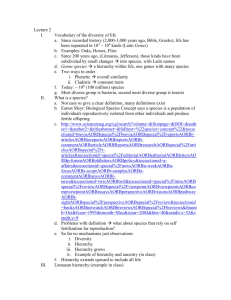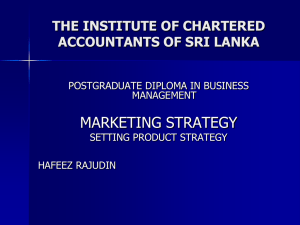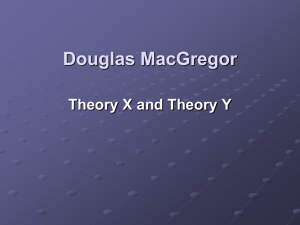Patrick McClellan John Scarborough Brian Ashley Leanne Mihelich
advertisement
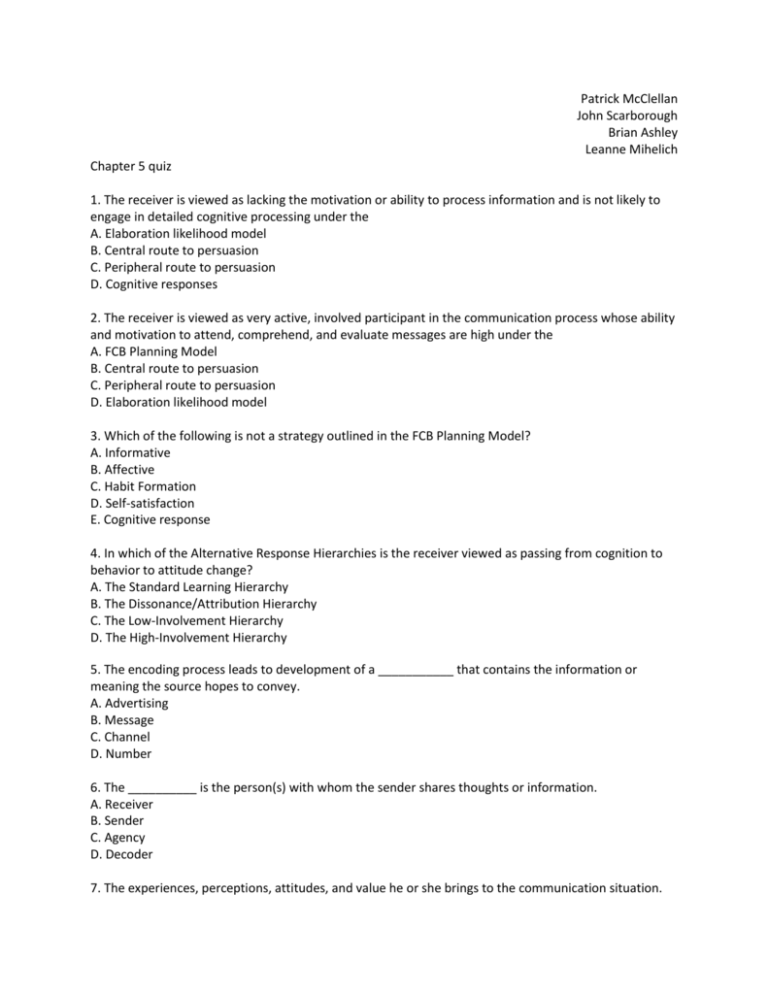
Patrick McClellan John Scarborough Brian Ashley Leanne Mihelich Chapter 5 quiz 1. The receiver is viewed as lacking the motivation or ability to process information and is not likely to engage in detailed cognitive processing under the A. Elaboration likelihood model B. Central route to persuasion C. Peripheral route to persuasion D. Cognitive responses 2. The receiver is viewed as very active, involved participant in the communication process whose ability and motivation to attend, comprehend, and evaluate messages are high under the A. FCB Planning Model B. Central route to persuasion C. Peripheral route to persuasion D. Elaboration likelihood model 3. Which of the following is not a strategy outlined in the FCB Planning Model? A. Informative B. Affective C. Habit Formation D. Self-satisfaction E. Cognitive response 4. In which of the Alternative Response Hierarchies is the receiver viewed as passing from cognition to behavior to attitude change? A. The Standard Learning Hierarchy B. The Dissonance/Attribution Hierarchy C. The Low-Involvement Hierarchy D. The High-Involvement Hierarchy 5. The encoding process leads to development of a ___________ that contains the information or meaning the source hopes to convey. A. Advertising B. Message C. Channel D. Number 6. The __________ is the person(s) with whom the sender shares thoughts or information. A. Receiver B. Sender C. Agency D. Decoder 7. The experiences, perceptions, attitudes, and value he or she brings to the communication situation. A. Decoder B. Mass media C. Word of mouth D. Field of Experience 8. ___________ are thoughts the recipient has that are opposed to the position taken in the message. A. Source derogations B. Daydreams C. Ideas D. Counterarguments 9. One of the most widely used methods for examining consumers’ cognitive processing of advertising messages is examining their: A. Cognitive responses B. Past Purchases C. Habits D. Income 10. Thoughts that are opposed to the position taken in the message are called: A. Counterarguments B. Stances C. Oppositions D. Useless 11. Ad execution-related acts can be: A. Favorable or unfavorable B. True or false C. Numerical or Alphabetical D. None of the above 12. In the AIDA model AIDA stands for: A. Attention, Interest, Desire, Action B. Attention, Influence, Decision, Argue C. Attention. Imagination, Debate, Act D. Attention, Illusion, Do, Acquire 13. Which of the following is NOT a form of encoding? A. Verbal B. Graphic C. Musical D. Animation E. Digital 14. ________ is anything that can distort or interfere with the reception of a message. A. Noise B. Static C. White noise D. Vuvuzela 15. Successful communication is accomplished when a marketer does all of the following except: A. Selects an appropriate source B. Develops an effective message C. Makes cold-calls D. Selects the channels that will reach the audience E. Receive Feedback 16. Smaller, well-defined markets consisting of customers who have similar needs: A. Mass Markets B. Niche Markets C. Market Segments D. Small Markets 17. This model was developed to depict the stages in the personal selling process. A. AIDA Model B. Hierarchy of Effects Model C. Innovation Adoption Model D. Information Processing Model 18. Product/Message thoughts include: A. Product differentiation and Product involvement B. Thoughts about the ad itself and Affect/attitude toward the ad C. Source derogation and Source bolsters D. Counter arguments and Support arguments 19. The three stages of The Standard Learning Hierarchy are: A. do feel learn sequence B. learn feel do sequence C. learn do feel sequence D. feeldo learn sequence 20. Which of the following is NOT an alternative response hierarchy? A. The Standard Learning Hierarchy B. The Dissonance/Attribution Hierarchy C. Low Involvement Hierarchy D. High Involvement Hierarchy Answers: 1) C 2) B 3) E 4) C 5) B 6) A 7) D 8) D 9) A 10) A 11) A 12) A 13) E 14) A 15) C 16) B 17) A 18) D 19) B 20) D

